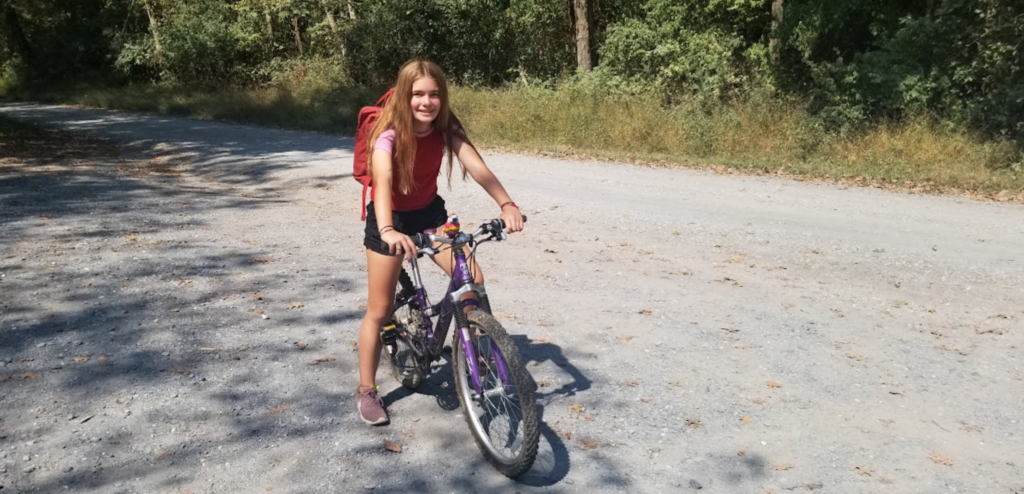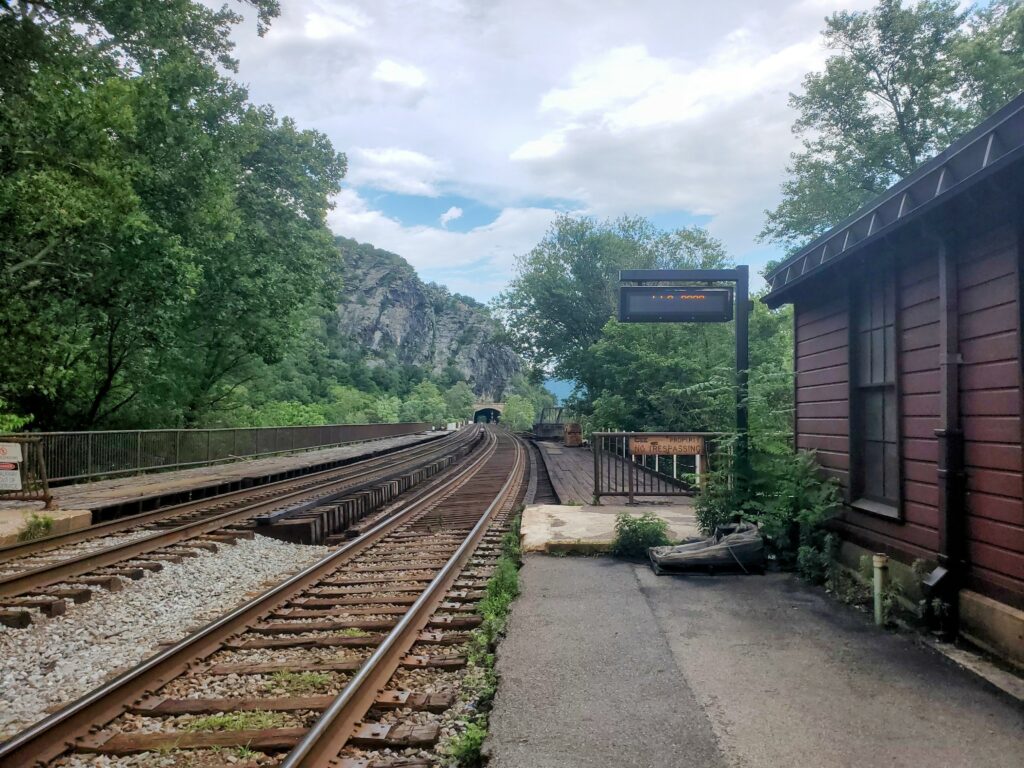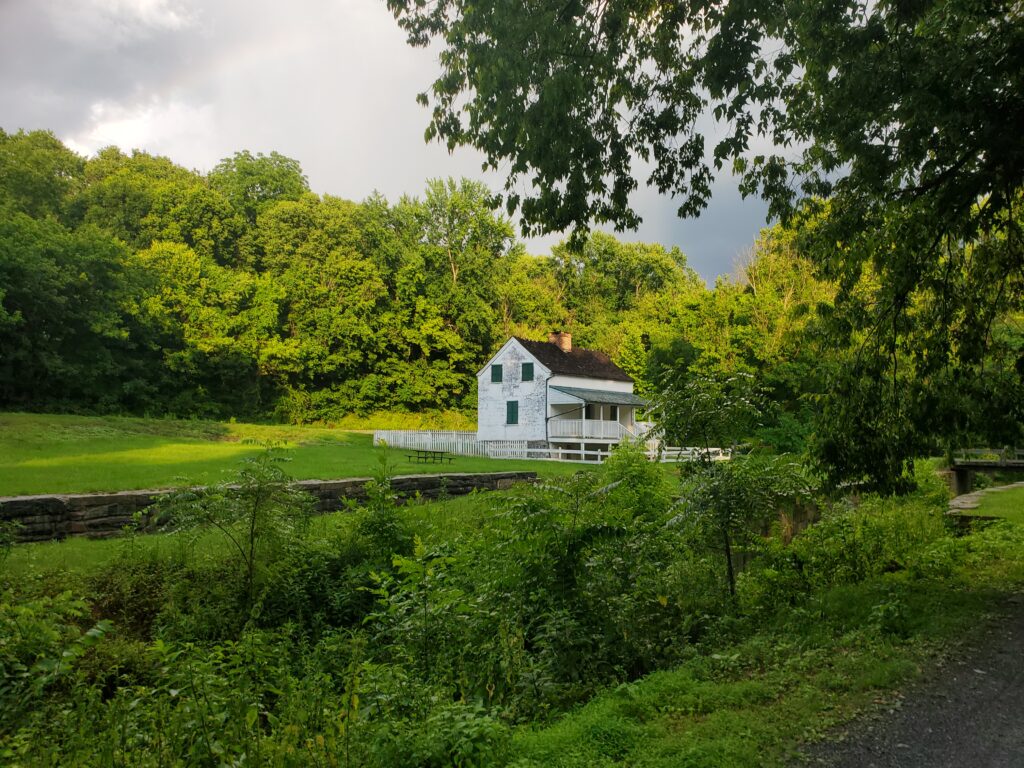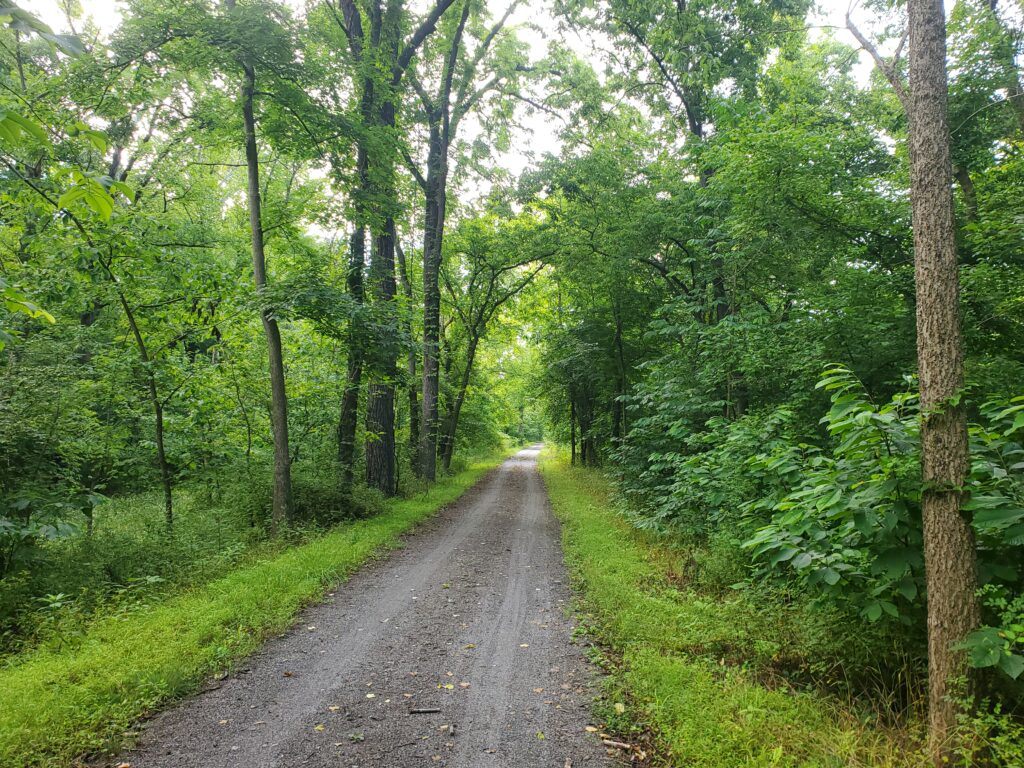The Chesapeake and Ohio Canal, often referred to as the C&O Canal, holds a rich history as a significant transportation route in the United States. Its construction was started on July 4th, 1828, and aimed to connect the eastern seaboard city of Washington, D.C., with the Ohio River, providing a vital trade route to the western territories. That morning, President John Quincy Adams and a group of dignitaries headed up the Potomac from Georgetown on three steamboats. They were welcomed by the Marine Band and a crowd of around 2,000 people at the top of Little Falls. Adams made a brief speech in which he stated that “The project contemplates a conquest over physical nature, such has never been achieved by man.” He compared the canal construction to the Great Wall of China, the Colossus of Rhodes, and the Egyptian Pyramids. The ceremonial spade was then plunged into the floor by him. But he ran into some rocks and then another root, a rocky beginning that signaled a very difficult endeavor to come.
The canal spanned approximately 184.5 miles, following the Potomac River’s natural course. Despite facing numerous challenges during its construction, such as funding issues and labor shortages, the C&O Canal was finally completed in 1850 and served as a vital commercial route for decades.
Initially designed as a response to the emerging railway industry, the C&O Canal proved to be a successful means of transporting goods before the invention of the train. For many years, the canal facilitated the movement of coal, lumber, and agricultural products from the Ohio River Valley to the markets of Washington, D.C. However, as the railway network expanded and offered faster and more efficient transportation, the canal gradually lost its rank as a primary commercial route.
As the 20th century progressed, the C&O Canal experienced a transformation, shifting from a busy trade route to a recreational haven. In 1938, the canal and its surrounding areas were designated as the Chesapeake and Ohio Canal National Historical Park, preserving its historic significance and providing a sanctuary for nature enthusiasts and history buffs alike. Today, visitors can explore the remains of the canal’s lock houses and towpaths, gaining insight into the nation’s early transportation history and enjoying the picturesque beauty of this waterway, which continues to captivate the imagination of those who venture along its banks.






Leave a Reply